- Overview of Buddleia David Seedlings
- 1. Characteristics of Buddleia David seedlings
- 2. Germination and growth timeline
- 3. Fertilization and pruning
- 4. Transplanting Buddleia David seedlings
- Choosing the Right Soil for Sowing Buddleia David Seeds
- 1. Well-Draining Soil
- 2. Sandy Loam Soil
- 3. pH Level
- 4. Organic Matter
- 5. Fertilizer
- 6. Avoid Heavy Clay Soils
- Sowing Buddleia David Seeds: Step-by-Step Guide
- Care and Maintenance of Buddleia David Seedlings
- 1. Transplanting Seedlings
- 2. Watering
- 3. Fertilization
- 4. Pruning
- 5. Protection from Pests and Diseases
- 6. Winter Protection
- 7. Garden Maintenance
- Watering and Fertilizing Buddleia David Seedlings
- Watering
- Fertilizing
- Protecting Buddleia David Seedlings from Pests and Diseases
- 1. Pest control
- 2. Disease prevention
- 3. Regular monitoring
- 4. Organic alternatives
- Transplanting Buddleia David Seedlings: Best Practices
- Introduction
- Timing
- Preparation
- Transplanting Process
- Aftercare
- Conclusion
- Questions and Answers:
- Can I grow Buddleia David seedlings indoors?
- What is the best time to sow Buddleia David seeds?
- How long does it take for Buddleia David seedlings to germinate?
- What kind of soil is best for growing Buddleia David seedlings?
- When can I transplant Buddleia David seedlings into the garden?
- How can I protect Buddleia David seedlings from pests?
- Videos: Deadheading a Butterfly Bush
Growing Buddleia David seedlings can be a rewarding experience for any garden enthusiast. Also known as butterfly bush, Buddleia David is a flowering shrub that is cherished for its beautiful blossoms and ability to attract butterflies and other pollinators.
When it comes to sowing Buddleia David seeds, it’s important to start with quality seeds from a reputable source. Before sowing, soak the seeds in water for 24 hours to improve germination rates. Then, fill a seed tray or small pots with a quality seed compost and lightly press the seeds into the surface, ensuring they are evenly spaced.
Once sown, cover the seeds with a thin layer of compost and gently mist the surface with water. Place the seed tray or pots in a warm and bright location, but out of direct sunlight. It’s crucial to maintain a consistent level of moisture throughout the germination period, so regularly check the compost and mist as needed.
After a few weeks, you should start to see tiny seedlings emerging. At this point, it’s important to thin them out to allow room for growth. Transplant the seedlings into individual pots when they have developed their first true leaves, being careful not to damage the delicate roots. Once transplanted, place the pots in a sheltered area and gradually acclimate the seedlings to outdoor conditions by exposing them to increasing amounts of sunlight and wind.
As the seedlings continue to grow, it’s important to provide them with regular watering and fertilization to promote healthy and vigorous growth. Once the seedlings have reached a suitable size and the threat of frost has passed, they can be planted out in a sunny location with well-draining soil. Buddleia David is a hardy shrub that can tolerate a variety of soil conditions, but it thrives in fertile soil with good drainage.
In conclusion, growing Buddleia David seedlings requires patience and care, but the results are well worth it. By following these sowing and transplanting tips, you can enjoy the beauty of Buddleia David’s vibrant blossoms and the fluttering of butterflies in your garden.
Overview of Buddleia David Seedlings
Buddleia David, also known as Butterfly Bush, is a popular flowering plant for many garden enthusiasts. Its beautiful and fragrant blooms attract a variety of butterflies and bees, making it a favorite choice for gardeners who want to attract pollinators.
Starting Buddleia David seedlings from seeds is a cost-effective way to grow this plant. It allows you to have full control over the growing process and ensure that your plants are healthy and well-adapted to your garden conditions.
In this guide, we will walk you through the steps of sowing and transplanting Buddleia David seedlings. But before we dive into the details, let’s take a closer look at the overview of Buddleia David seedlings.
1. Characteristics of Buddleia David seedlings
Buddleia David seedlings are typically small and delicate. They have thin stems and two small leaves emerging from the top. The leaves are usually light green in color and lance-shaped. As the seedlings mature, they develop more leaves and start to form a bushy structure.
These seedlings are highly adaptable and can tolerate a wide range of growing conditions, including different soil types and light levels. They are known for their fast growth rate, and with proper care, they can quickly establish themselves in your garden.
2. Germination and growth timeline
The germination process of Buddleia David seeds typically takes about 2 to 3 weeks. During this time, the seeds will sprout, and the seedlings will start to emerge from the soil. It is important to keep the soil consistently moist during this period to ensure successful germination.
Once the seedlings have emerged, they will continue to grow rapidly. With adequate sunlight, water, and nutrients, the seedlings can grow up to several inches within a few weeks. However, it is important to note that the growth rate may vary depending on the specific growing conditions.
3. Fertilization and pruning
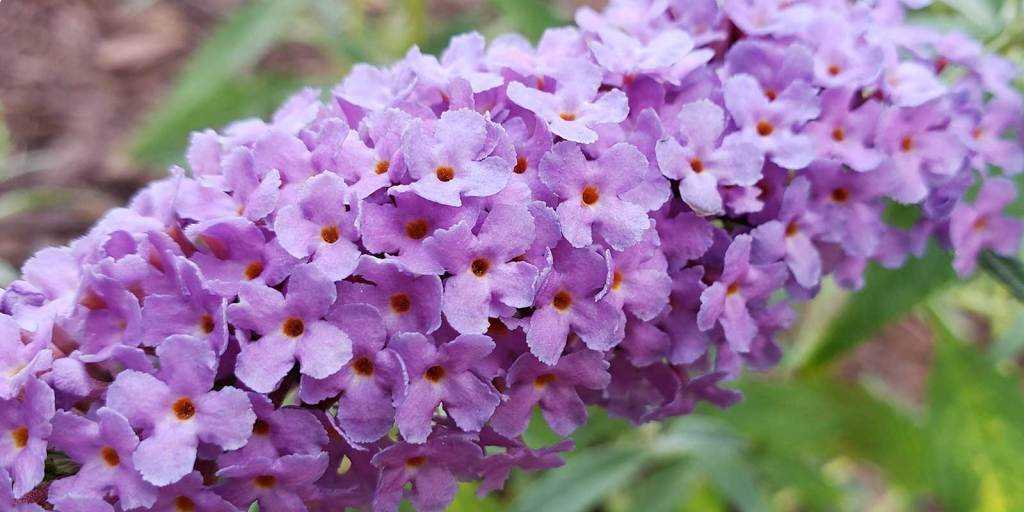
To support the growth of your Buddleia David seedlings, it is recommended to fertilize them every 2 to 3 months with a balanced organic fertilizer. This will provide the necessary nutrients for healthy foliage and flower production.
Pruning is also an essential part of maintaining the shape and size of your Buddleia David plants. It is best to prune the seedlings in their first year to encourage branching and a more compact growth habit. Regular pruning can also help prolong the flowering period and prevent the plant from becoming too woody.
4. Transplanting Buddleia David seedlings
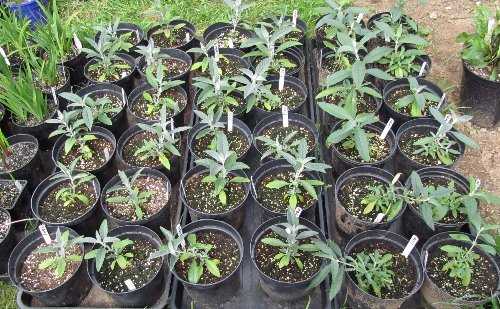
When the Buddleia David seedlings have grown to a suitable size and the risk of frost has passed, they can be transplanted into their permanent location in the garden. Prepare the planting hole by loosening the soil and adding compost or organic matter to improve drainage.
Gently remove the seedlings from their pots, being careful not to damage the delicate roots. Place the seedlings in the planting hole, making sure they are at the same depth as they were in the pots. Backfill the hole and firm the soil around the base of the seedlings.
Water the newly transplanted seedlings thoroughly and keep the soil consistently moist for the first few weeks. Once the seedlings are established and have developed a strong root system, they will require less frequent watering.
In conclusion, growing Buddleia David seedlings is a rewarding experience that allows you to enjoy the beauty and fragrance of these vibrant flowers. With proper care and attention, your seedlings will grow into healthy and thriving plants that will attract a plethora of butterflies and bees to your garden.
Choosing the Right Soil for Sowing Buddleia David Seeds
Choosing the right soil for sowing Buddleia David seeds is crucial to ensure healthy seed germination and development. Here are some tips on selecting the ideal soil for your seedlings:
1. Well-Draining Soil
Buddleia David plants prefer well-draining soil to prevent the roots from becoming waterlogged. The soil should be loose and friable to allow for proper aeration and drainage.
2. Sandy Loam Soil
A sandy loam soil is an excellent choice for growing Buddleia David seedlings. Sandy soil provides good drainage, while loam soil contains a balanced mix of sand, silt, and clay, allowing for both moisture retention and drainage.
3. pH Level
Buddleia David plants prefer slightly acidic to neutral soil with a pH level between 6.0 and 7.5. You can use a soil testing kit to check the pH level of your soil and make necessary amendments if needed.
4. Organic Matter
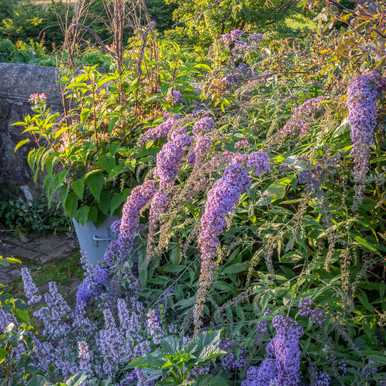
Incorporating organic matter, such as compost or well-rotted manure, into the soil before sowing the seeds can improve soil structure and provide essential nutrients for seedling growth.
5. Fertilizer
Applying a slow-release fertilizer with balanced nutrients, such as a 10-10-10 formulation, can help provide the necessary nutrients for Buddleia David seedlings. Follow the dosage instructions provided by the fertilizer manufacturer.
6. Avoid Heavy Clay Soils
Avoid using heavy clay soils for sowing Buddleia David seeds, as they tend to retain too much water and may lead to root rot. If you have clay soil, consider amending it with sand or organic matter to improve drainage.
Remember, proper soil preparation is essential for successful sowing and germination of Buddleia David seeds. Following these tips can help create the ideal soil conditions for healthy seedling growth.
Sowing Buddleia David Seeds: Step-by-Step Guide
Here is a step-by-step guide on how to sow Buddleia David seeds:
- Gather materials: You will need a seed tray or small pots, seed compost, water, and Buddleia David seeds.
- Prepare the seed tray or pots: Fill the seed tray or pots with seed compost, leaving a small space at the top.
- Sow the seeds: Sprinkle the Buddleia David seeds over the compost, spacing them out evenly. Do not bury the seeds too deep, as they need light to germinate.
- Cover the seeds: Gently cover the seeds with a thin layer of compost or vermiculite. This will help retain moisture and protect the seeds.
- Water the seeds: Use a fine mist spray to water the seeds, ensuring that the compost is evenly moist. Avoid overwatering, as this can cause the seeds to rot.
- Provide the right conditions: Place the seed tray or pots in a warm and well-lit area, such as a greenhouse or sunny windowsill. The ideal temperature for germination is around 70°F (21°C).
- Wait for germination: It may take anywhere from 1 to 3 weeks for the Buddleia David seeds to germinate. Be patient and keep the compost moist during this time.
- Transplant the seedlings: Once the seedlings have grown their true leaves and are large enough to handle, you can transplant them into individual pots or a larger container.
- Harden off and plant: Before planting the seedlings outdoors, gradually acclimate them to outdoor conditions by placing them outside for a few hours each day. After a week or two, the seedlings can be planted in their permanent location in the garden.
Following these steps will help you successfully sow Buddleia David seeds and grow healthy seedlings. Enjoy watching your Buddleia David plants flourish and attract beautiful butterflies to your garden!
Care and Maintenance of Buddleia David Seedlings
Once your Buddleia David seedlings have germinated and are ready for transplanting, proper care and maintenance will help ensure their healthy growth and development.
1. Transplanting Seedlings
When the seedlings have developed their first set of true leaves and are approximately 3-4 inches tall, they are ready to be transplanted into larger containers or directly into the ground.
Choose a location with well-draining soil and ample sunlight for optimal growth.
2. Watering
Keep the soil consistently moist but not waterlogged. Water the seedlings regularly, especially during dry spells or if they are grown in containers.
However, avoid overwatering, as excessive moisture can lead to root rot and other issues.
3. Fertilization
Apply a balanced fertilizer once the seedlings have established and are actively growing. Follow the instructions on the fertilizer package for the correct dosage and application method.
Alternatively, you can use organic compost or well-rotted manure to provide nutrients to the seedlings.
4. Pruning
Prune the seedlings to encourage bushier growth and to remove any dead or damaged branches. This will also help maintain the shape of the plant and promote better flowering.
Regularly remove spent flowers to encourage continuous blooming and prevent the formation of seeds.
5. Protection from Pests and Diseases
Monitor your Buddleia David seedlings for any signs of pests or diseases such as aphids, caterpillars, or powdery mildew.
If necessary, treat with appropriate insecticides or fungicides to control these issues.
6. Winter Protection
In colder climates, provide winter protection for your Buddleia David seedlings. Apply a layer of mulch around the base of the plant to insulate the roots from freezing temperatures.
You can also cover the seedlings with a frost cloth or bring them indoors if severe frost or cold weather is expected.
7. Garden Maintenance
Regularly weed the area around your seedlings to prevent competition for nutrients and space.
Prune back any nearby plants that may overshadow or crowd the seedlings.
By following these care and maintenance tips, you can help your Buddleia David seedlings thrive and enjoy their beautiful flowers for years to come. Enjoy gardening!
Watering and Fertilizing Buddleia David Seedlings
Proper watering and fertilizing are essential for the healthy growth and development of Buddleia David seedlings. Here are some tips to ensure your seedlings receive the right amount of water and nutrients:
Watering
- Seedlings should be watered regularly to keep the soil consistently moist, but not waterlogged.
- Water the seedlings at the base, avoiding wetting the foliage to prevent disease.
- Check the soil moisture level by inserting your finger about an inch into the soil. If it feels dry, water the seedlings.
- During hot weather or prolonged dry spells, increase the frequency of watering to prevent the seedlings from drying out.
- Avoid overwatering, as it can lead to root rot and other fungal diseases.
- Consider using a drip irrigation system or soaker hose to ensure consistent and even watering.
Fertilizing
- Start fertilizing the seedlings when they have developed their second or third set of true leaves.
- Use a balanced, slow-release fertilizer with equal amounts of nitrogen, phosphorus, and potassium (NPK).
- Follow the manufacturer’s instructions for the recommended dosage and frequency of application.
- Avoid over-fertilizing, as excess nutrients can burn the seedlings’ roots.
- Alternatively, you can use organic fertilizers such as compost or well-rotted manure.
- Apply the fertilizer evenly around the seedlings, keeping it a few inches away from the stem to prevent burning.
- Water the seedlings after fertilizing to ensure the nutrients are properly absorbed by the roots.
By following these watering and fertilizing tips, you can help your Buddleia David seedlings thrive and grow into healthy, vibrant plants.
Protecting Buddleia David Seedlings from Pests and Diseases
When growing Buddleia David seedlings, it is important to protect them from common pests and diseases that can hinder their growth and development. By implementing some preventative measures, you can ensure the health and vigor of your seedlings.
1. Pest control
Pests such as aphids, spider mites, and caterpillars can pose a threat to Buddleia David seedlings. To prevent infestations, regularly inspect your plants for signs of pests and take appropriate action:
- Use insecticidal soap or neem oil spray to control aphids and spider mites. Apply according to the instructions on the label.
- If caterpillars are present, manually remove them from the plants. Alternatively, you can use Bacillus thuringiensis (Bt) insecticide, which specifically targets caterpillars.
2. Disease prevention
Buddleia David seedlings can be susceptible to diseases such as powdery mildew and root rot. To prevent these diseases, follow these tips:
- Ensure good air circulation around the seedlings by spacing them adequately.
- Water the plants at the base to minimize moisture on the foliage, as this can create a favorable environment for powdery mildew.
- Avoid overwatering the seedlings, as excessive moisture can lead to root rot. Instead, water them moderately, allowing the soil to dry slightly between waterings.
- If you notice any signs of disease, such as white powdery patches or wilting, remove the affected parts of the plant and dispose of them properly.
3. Regular monitoring
Regularly monitor your Buddleia David seedlings for any signs of pests or diseases. Early detection allows for prompt action to prevent the spread of infestations or infections. Check the leaves, stems, and underside of the foliage for any signs of damage or discoloration.
4. Organic alternatives
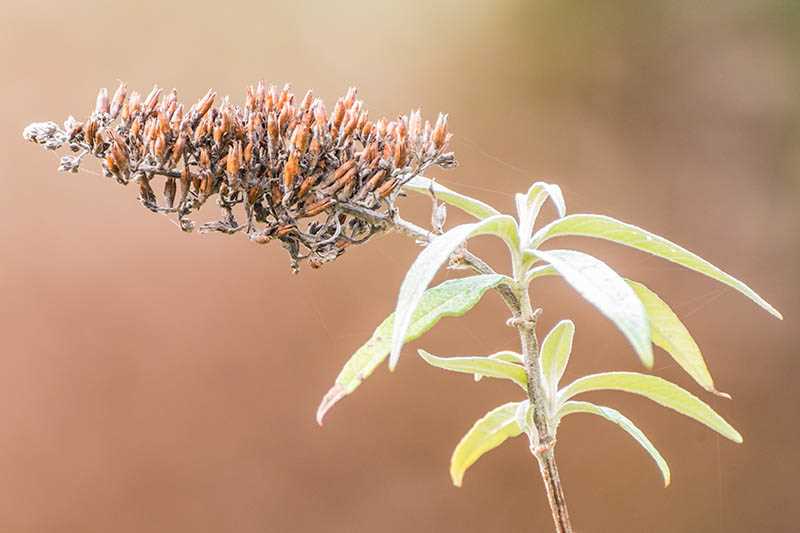
If you prefer to use organic methods to protect your seedlings, there are several options available. For example, you can use companion plants with natural pest-repellent properties, such as marigolds or garlic. Additionally, introducing beneficial insects like ladybugs or lacewings can help control aphid populations.
By implementing these preventative measures and monitoring your Buddleia David seedlings regularly, you can minimize the risk of pests and diseases, allowing your plants to thrive and grow into healthy, beautiful specimens.
Transplanting Buddleia David Seedlings: Best Practices
Introduction
Transplanting Buddleia David seedlings is an important step in their growth process. This article will provide you with best practices on how to effectively and successfully transplant your seedlings for optimal growth and development.
Timing
It is best to transplant your Buddleia David seedlings when they are about 4-6 weeks old and have developed a strong root system. This is usually when the seedlings have grown their second set of true leaves.
Preparation
- Before transplanting, make sure to prepare the planting area. Choose a location that receives plenty of sunlight and has well-drained soil. Remove any weeds or grass and break up the soil to allow for better root penetration.
- Water the seedlings the day before transplanting to ensure they are well-hydrated.
Transplanting Process
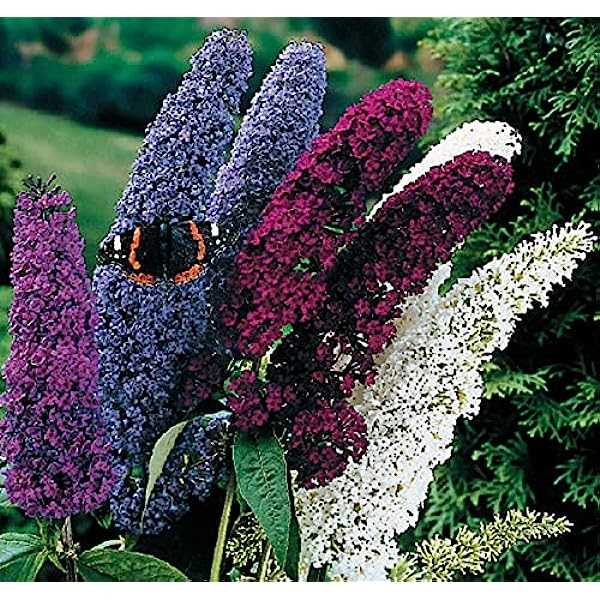
- Gently loosen the soil around the seedlings using a small garden shovel or hand trowel. Take care not to damage the delicate roots.
- Dig a hole in the prepared planting area that is slightly larger than the root ball of the seedling.
- Carefully remove the seedling from its container, taking care to keep the root ball intact.
- Place the seedling in the hole, making sure it is planted at the same level it was in its original container. The soil should cover the top of the root ball.
- Backfill the hole with soil, gently firming it around the seedling to remove any air pockets.
- Water the newly transplanted seedling thoroughly to help settle the soil and ensure proper hydration.
Aftercare
- Keep the transplanted seedlings well-watered, especially during hot or dry spells.
- Apply a layer of mulch around the base of the plants to help conserve moisture and suppress weed growth.
- Monitor the seedlings for any signs of stress or disease, and take appropriate measures to address any issues.
- Prune the seedlings lightly to encourage branching and a bushier growth habit.
Conclusion
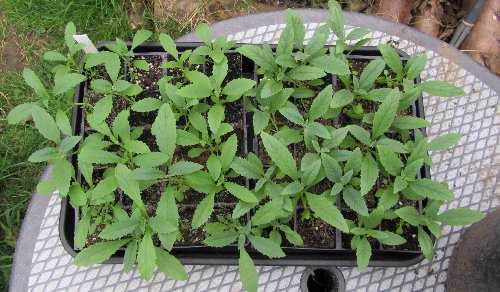
By following these best practices for transplanting Buddleia David seedlings, you can ensure their successful growth and establishment in your garden. Remember to provide them with adequate care and attention, and enjoy the beautiful blooms that will follow!
Questions and Answers:
Can I grow Buddleia David seedlings indoors?
Yes, you can grow Buddleia David seedlings indoors. It is recommended to start the seeds indoors in late winter or early spring. Use a container with well-draining soil and place it in a sunny spot. Keep the soil moist and warm, and transplant the seedlings outdoors after the last frost date.
What is the best time to sow Buddleia David seeds?
The best time to sow Buddleia David seeds is in late winter or early spring. This will give the seedlings enough time to establish themselves before the summer heat. Starting the seeds indoors and transplanting them outdoors after the last frost date is a common method.
How long does it take for Buddleia David seedlings to germinate?
Buddleia David seedlings usually take about 10 to 14 days to germinate. However, it may take longer depending on the temperature and moisture conditions. Once the seedlings have sprouted, they should be kept in a warm and well-lit area to promote healthy growth.
What kind of soil is best for growing Buddleia David seedlings?
Buddleia David seedlings prefer well-draining soil that is rich in organic matter. A mixture of compost, peat moss, and perlite or sand can be used to create a suitable growing medium. It is important to keep the soil moist but not soggy, as excessive moisture can lead to root rot.
When can I transplant Buddleia David seedlings into the garden?
Buddleia David seedlings can be transplanted into the garden after the threat of frost has passed and the soil has warmed up. This is usually around late spring or early summer, depending on your climate. Before transplanting, make sure to harden off the seedlings by gradually exposing them to outdoor conditions.
How can I protect Buddleia David seedlings from pests?
To protect Buddleia David seedlings from pests, you can use organic pest control methods such as neem oil or insecticidal soap. These products are safe for the seedlings and will help control common pests like aphids or caterpillars. Regularly inspect the seedlings for any signs of damage or infestation.







